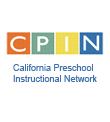Home | Supporting Dual Language Learners | Teacher Interactions and Strategies | Speaking
Speaking
The following interactions and strategies from the California Preschool Curriculum Framework, Volume 1, pp. 198-199, (CDE, 2010)support dual language learners in building speaking skills:
Learn how to pronounce each child’s name as accurately as possible.
- Ask for help from a native speaker.
- Have the native speaker audio-record the pronunciation.
- Practice saying the name for the native speaker for help with pronunciation.
Learn some key words or phrases in each child’s home language.
- Ask families, staff or community members to share a few key words and phrases (e.g., hello, good bye, please, thank you, and sit down) in the home language.
- Convey that the home language is important by using the home language to make the child comfortable.
- Translate key words from stories read in English to increase each child’s interest and to validate the importance of the home language.
Repeat common phrases slowly and clearly.
- Modify the rate of speech to provide time for children to here good examples of English words and phrases.
- Combine gestures, pictures and touching objects to connect the vocabulary to concepts.
Allow the child to start slowly.
- Provide multiple opportunities for observing classroom routine.
- Allow ample time before requiring response to directives in English.
Allow for wait time.
- Use extended wait time to allow dual language learners time to process information in English.
Scaffold communication.
- Include body gestures and visual cues to help dual language learners connect actions and words.
- Point to objects or words that represent the vocabulary being used.
- Watch an example of scaffolding on the DVD, World Full of Language.
Be thoughtful about helping children understand what words mean.
- Clarify, describe, and/or show to help children better understand the meaning of words.
Plan for vocabulary development.
- Select key vocabulary to be used in formal and informal activities.
- Connect vocabulary to visual aids or gestures.
- Use key vocabulary intentionally throughout the day.
- Watch a video example on the DVD, Early Steps to Reading Success—Christine and the science lesson.
Expand and extend the child’s language.
- Catch children using English and build upon their utterances.
- Add adjectives or complete sentences to model English and expand vocabulary.
Create small groups for book reading.
- Provide reading opportunities in small groups.
- Slow the pace of reading.
- Use words and phrases in the home language to assist with understanding and scaffold learning.
- Build in activities for children to interact with the book (e.g., props or dialogic reading).
- Watch a video example.
Ask a family member or knowledgable community resource to share appropriate social conventions for the child’s language and culture.
- Learn the cultural expectations for the ways children interact with teachers, other adults, and peers.
- Create an ongoing dialogue that builds a partnership between children and families.
Observe the child for cues during drop off and pick up.
- Notice how the parent or other family members interact with the child and how the child behaves during these interactions.
- Observe how the adults react to the children.
- Use these observations to learn about the ways the child has experienced communication and language interaction in their culture.
- Identify the ways the teachers’ communication and language styles are consistent with, or different from, that of the children and families.
- Consider modifying approaches to use communication styles more familiar to the children (e.g., If the child is expected to only speak when spoken to, teachers can be sure to ask questions to the children as an individual rather than to the group).
During circle time, or small group time, talk to child about the different ways they greet adults and other children in their family.
- Ask children how they say hello and good bye to adults.
- Use puppets or figures of a family to role play.
- Discuss the ways children address their peers.
Listen appreciatively to child’s stories.
- Provide as much undivided attention to the child when he/she speaks.
- Use positive reinforcement to honor their attempts to relate a story.
Ask open-ended questions and sustain the conversation over a number of turns.
- Provide opportunities for children to practice English.
- Ask children what they did the night before, over the weekend, or during the holiday break.
- Make time for daily sharing that requires more than one word responses.
Help children understand idioms.
- Use age appropriate idioms and explain what they mean.
- Note where idiomatic expressions occur in preparing read alouds, songs, or finger plays; pre-plan an explanation.
- See some examples of common idioms here.
Provide materials that stimulate talking or oral narratives.
- Use dramatic play, puppet and other interest areas as places where materials encourage children to express themselves in more spontaneous ways.
- Provide photos of children working and playing, and encourage children to talk about what they were doing.
- Utilize audio recorders for children to record and hear their voices as well as to capture children’s oral language development.
Provide wordless picture books.
- Model how to look at the pictures and create one’s own story.
- Ask open-ended questions about the pictures to help children start talking.
- Write open ended questions on stickies and place them on the pages (e.g., “Why do you think the cat is afraid of the dog?”, or “Who has an idea of something else the pigs could use to build their houses?”).




